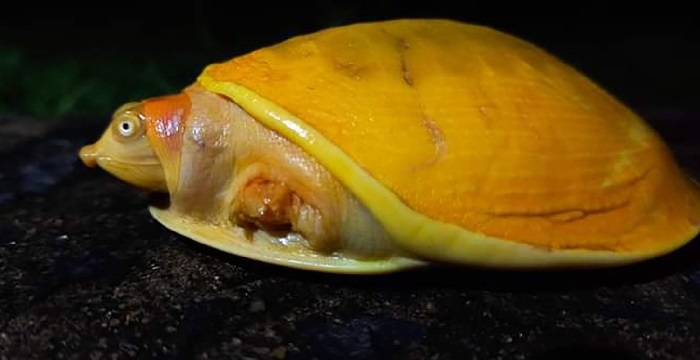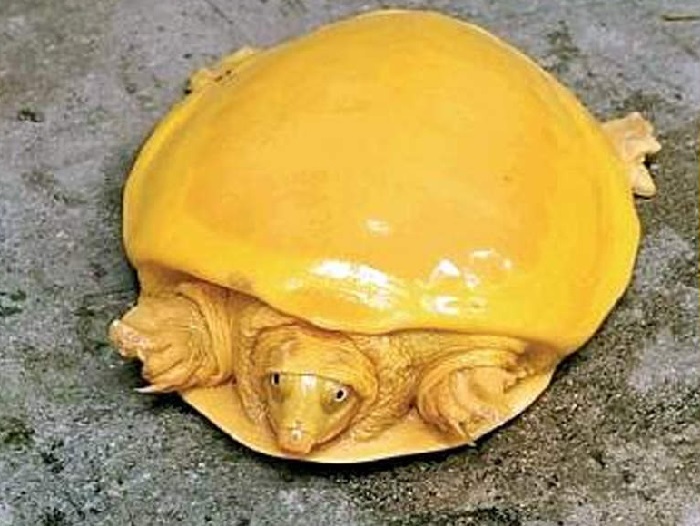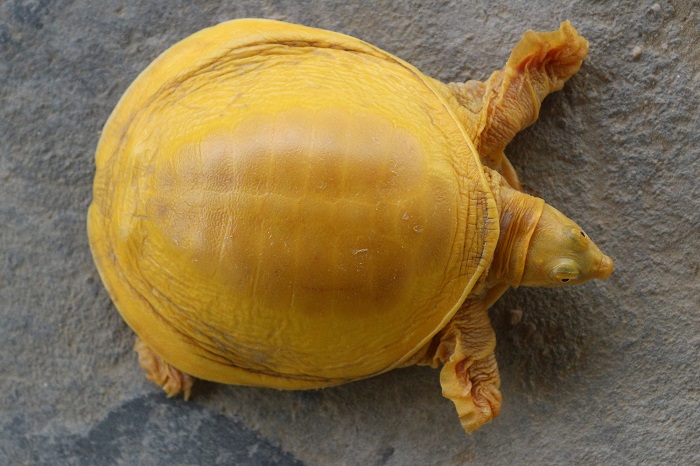This turtle is exceptionally uncommon — unlike the food products that internet denizens believe it resembles.

A bizarre-looking creature, recently found in a village in Nepal, has been identified as an Indian flapshell turtle with a unique condition, and Twitter users are having a field day comparing it to packaged snack items.
“Today a Yellow Turtle was rescued from a Pond in Burdwan,” tweeted Indian Forest Service worker Debashish Sharma on Tuesday about the find from West Bengal. “It’s one kind of a rarely [occurring] Flapshell Turtle.”

The viral tweet, which has racked up over 7,200 likes, has attracted both commenters interested in discussing the creature, and those more interested in joking around.
Some have even photoshopped it into a cheeseburger and compared it to a pancake, Moon Pie and the Mario Bros. character Koopa, among other things.

The reason the little fellow looks so unique, however, has nothing to do with junk food or cartoon characters: The critter has chromatic leucism, which is defined by a loss of color pigmentation and results in white, pale or patchy skin.
In the case of the internet’s new favorite American-cheese impersonator, it has led to a condition where yellow pigment cells become dominant. “This is my first encounter with this unusual color of turtle,” reptile expert Kamal Devkota, who documented the find, told Zuma Press.

The strange little guy is the first recorded turtle in Nepal with chromatic leucism and only the fifth one worldwide.
After discovering and thoroughly photographing the turtle, researchers released it back into the wild — although Devkota worries that it may have a hard time surviving in nature. “Color aberrations are quite rare in nature because the affected individuals may be disadvantaged in their environment,” Devkota said.

In Nepal’s human society, though, the turtle should have no trouble getting by.
“Not only golden animals, but turtles overall have significant religious and cultural value in Nepal,” said Devkota. “It is believed that Lord Vishnu [one of the most prominent Hindu gods] took the form of a turtle to save the universe from destruction in his incarnation . . . In Hindu mythology the upper shell of the turtle denotes the sky and lower shell denotes Earth.”

